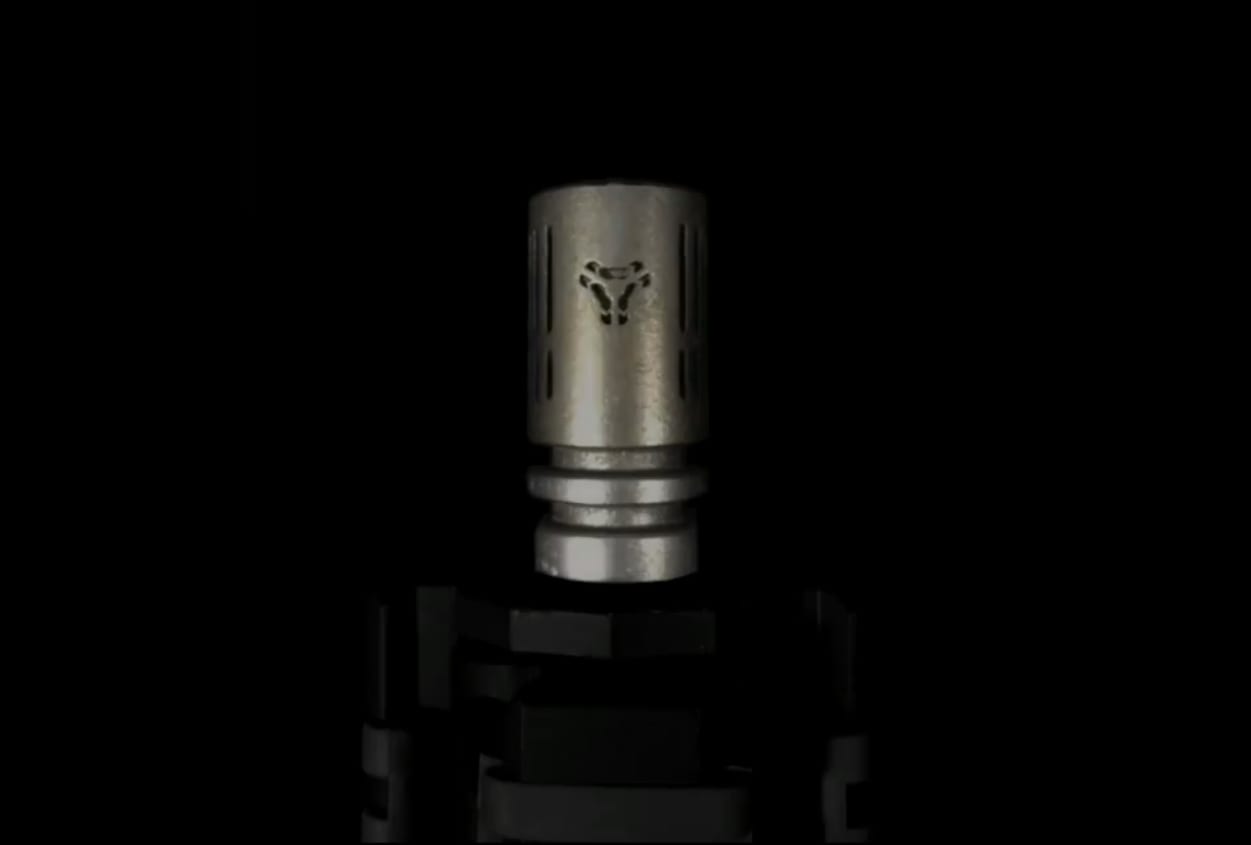Design Firm Creates 3D-printed Muzzle Brake
OutdoorHub Reporters 07.22.13

These days the world of 3D-printing seems to hold no limits for those eager to explore its capabilities. While other designers are still crafting with ABS plastic and similar materials, Sintercore Layered Defense has begun dabbling in metals. While manufacturing a product through 3D-printing may not necessarily be faster, it does offer greater control over the design, which can be changed at any time through a computer program. Sintercore owner Neal Brace said this was the main reason he turned to 3D-printing over more traditional means to produce his new “Auxetik” muzzle break for AR-15 rifles chambered in 5.56/.223.
“Since parts are built additively, layer by layer, instead of relying on casting or cutting tools, the inventor can design a part without worrying too much about internal or external geometry and completely forget about tooling,” Brace told Nick Leghorn on the shooting enthusiast blog The Truth About Guns.
Brace claims that the Auxetik is the first 3D-printed muzzle break to be created. It is designed to fit most AR-15 muzzles and is made out of a material called Inconel. Inconel is a family of nickel-chromium-based superalloys generally used for high-temperature work and is rather difficult to shape in conventional machining. It seems that Brace has found a way to work around this by using a 3D printer. Brace says that the muzzle brake was built to “tame” AR-15 pistols.
“Most people see the AR pistol as a novelty,” he said. “I see it, instead, as the future of firearms, because it is inherently lighter than a firearm with a shoulder stock, can accept any barrel length, and can be legally concealed or stored loaded in a vehicle. Basically, I said to myself that, if there was a way to mimic the benefits of the shoulder stock without the size, weight, and legal restrictions, I was going to find it.”
What resulted was a muzzle brake that tackled the common complaints associated with an AR-15 pistol: recoil, muzzle rise, and concussion.
“The reason why the Auxetik is so effective is because the internal passageways, which I’m calling 3D linear gas vents, are able to be built inside the device,” Brace said. “They couldn’t be built any other way without significant headaches. With these 3D linear vents, the propellant gas is routed very similarly to a linear compensator before being expelled transversely. Most linear compensators offer little to no recoil and muzzle rise reduction, but by mating linear compensator technology into a transverse muzzle brake, the concussion experienced by the shooter is reduced and the overall recoil reduction is increased. It’s win-win-win.”
The Auxetik is available on pre-order for $299.98. A demonstration can be seen below.

